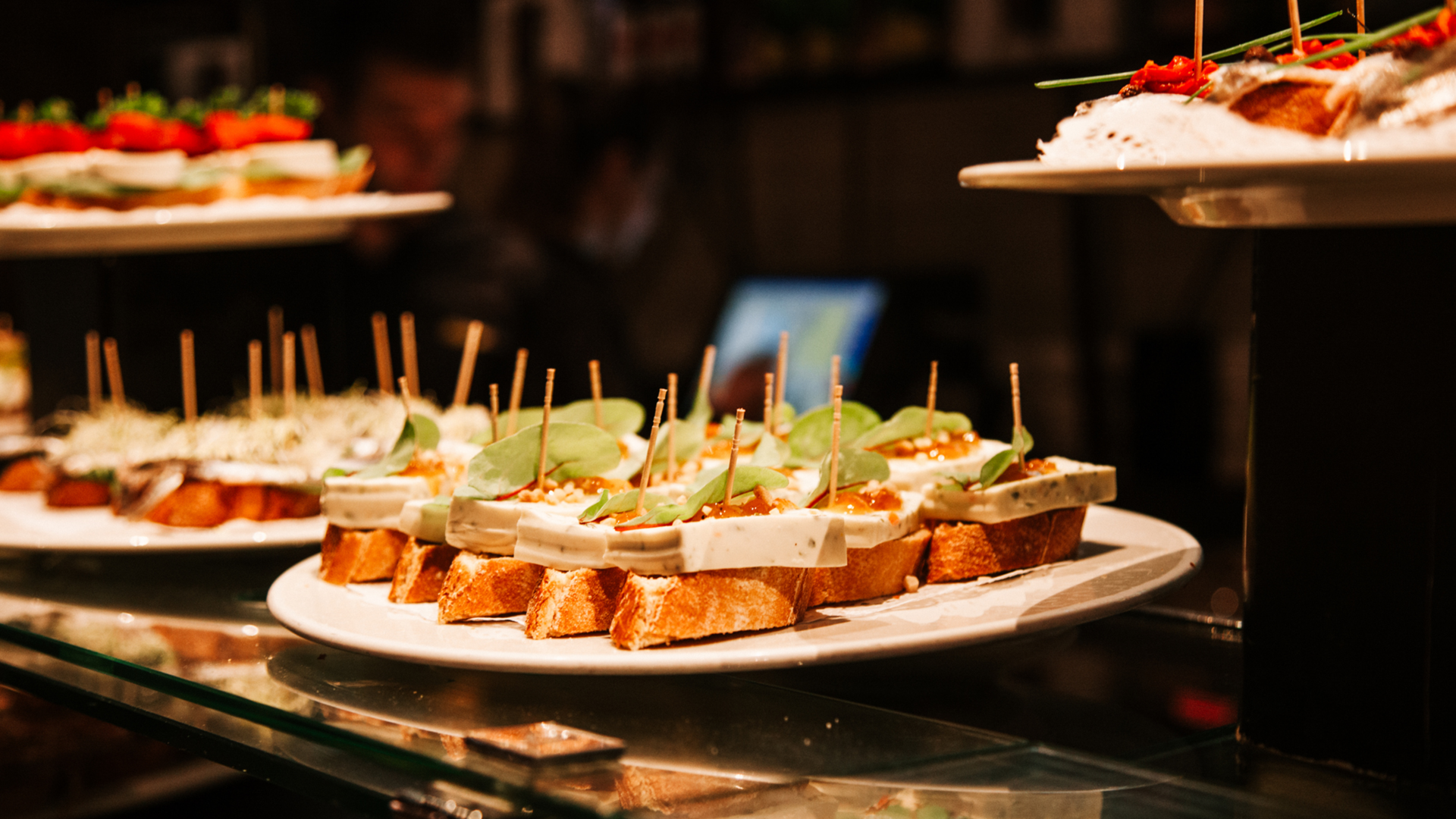
Pintxos and Michelin star cuisine in San Sebastián
With its diverse and innovative cuisine, San Sebastián is regarded as the heart of the Basque gastronomy scene. One evident sign of this is the high density of Michelin star restaurants. Read on to discover what’s so special about the cuisine in this city, which is also part of the Basque Tour de France stage 2023.
Colourful variety
If you’ve ever been to the Basque city of San Sebastián in northern Spain, you’re sure to remember the delicious hot or cold snacks known as ‘Pintxos’. These slices of bread topped with tasty little treats and held together with toothpicks can be found in almost every bar, for example.
Whether with pepper, cheese, aioli or chorizo, the almost endless range of pintxos offers something for everyone. Donostia, as San Sebastián is also called, is particularly renowned for pintxos made with fish or seafood, such as crab, cod or tuna, although you’ll also find the famous slices of bread topped with French ingredients such as foie gras.
The strong influence of French cuisine on the food in San Sebastián can be explained by a mixture of the geographical proximity to France and the political history of the Basque Country. This is because the city was under French rule in the 19th century during the Napoleonic Wars.
Arzak and other big names
There are multiple Michelin star restaurants in San Sebastián. This results in active competitive dynamics driven by strong business rivalry. Even the high-end gastronomy is heavily influenced by French (haute) cuisine – for example with regard to how exquisite sauces or refined desserts are made. Despite this, the local cuisine is naturally unique and characterised by impressive levels of innovation.
Famous restaurants such as ‘Arzak’ or ‘Mugaritz’ are run by avant-garde chefs. Elena Arzak, who learned a great deal from her father and iconic 1970s chef Juan Mari Arzak, focuses on creativity and tradition in her restaurant. She regards local and seasonal ingredients as key to the successful interplay of flavours and textures. For example, the olives popularly used for tapas are shock-frozen with liquid nitrogen to make them melt in the mouth.
Learn from the best
Active cultural exchange still exists between the French and Spanish Basques. For example, they collaborate closely from a gastronomic perspective in the Basque Culinary Center (BCC), where they cook together on BORA appliances. The culinary college was established in 2011, since when it has also shaped San Sebastián’s architectural cityscape. The BCC offers courses of study and further education programmes for aspiring chefs as well as several research projects.
Furthermore, cookery nights with a range of local chefs and gatherings for people with an interest in cooking are frequently held free of charge in over a hundred gastronomic societies known as ‘Sociedades Gastronómicas’. These cookery associations are financed by donations.
The importance of cuisine in San Sebastián is also highlighted by the numerous food festivals that regularly take place here, such as the ‘San Sebastián Gastronomika’ or the ‘Semana Grande’, where awards are bestowed upon the best pintxos in the city. Another important event this year is the Tour de France, which will pass through the Basque Country. What a great opportunity to visit northern Spain’s culinary metropolis!